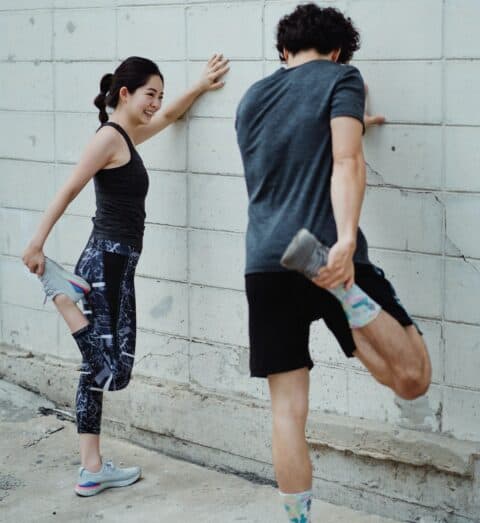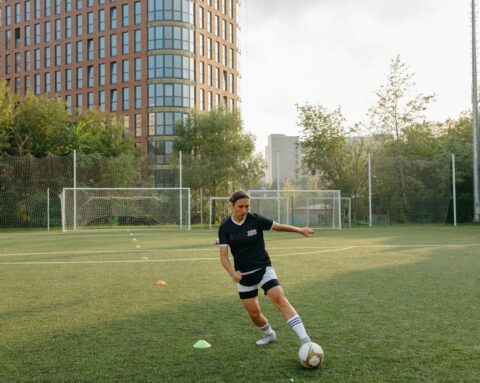One of the most common causes of “runners’ knee” ITB Syndrome or the iliotibial band syndrome accounts for approximately 20% of injuries attributed to overuse in runners. The ITB is a band of fascia which stems from the gluteus maximus and Tensor Fascia Latae muscles found on the outside of the pelvis. It is attached to a bony part of the knee and slides back and forth during movement. It is one of the hip abductor muscles which assists with moving the hip away from the midline. The ITB and nearby muscles are crucial in the stability of the leg during jumping and walking from initial foot contact with a surface until it drives forward. It is also crucial in aiding knee extension and flexion.
Repetitive sliding of the ITB creates large amounts of excess friction, especially during the moment when your foot strikes the ground, bending at an angle of 30 degrees. The area that is created by this movement creates a pinching of structures that produces ITB Friction Syndrome. ITB syndrome is frequently caused by an imperfect running style due to muscular imbalance. This generally occurs due to a by-product of running such as fatigue, lack of proper equipment or impact issues associated with the ground. Other causes of ITB syndrome include weak hips (including rotators, quadriceps and gluteal muscles,) weak core muscles, poor arch control, a sudden increase in mileage or intensity in training, poor running equipment and excessive endurance running or hill training.
There are a few symptoms associated with ITB syndrome which, if ignored, can lead to inflammation that causes scarring and a decreased range of motion and pain as activity decreases. ITB syndrome symptoms are generally observed as pain on the outside of the knee and may be first noticed during a run. Other key symptoms include pain brought on by knee bending, swelling seen on the outside of the knee, pain that continues to worsen during repetitive activities such as running, similar types of symptoms that persist for major periods of time such as more than 3 weeks.
As stated earlier in the article ITB syndrome is caused by excessive friction of the bony portion of your knee with the iliotibial band. People who are keen runners, especially those who run long distances or run around a track as opposed to in a straight line are prone to developing the syndrome. Inappropriate or worn-out footwear, as well as high amounts of ankle and foot pronation, can also lead to ITB syndrome. ITB syndrome may also commonly be seen in cyclists and is associated with poor bike set up and fit.
ITB syndrome can be treated in a number of ways and usually, people start to feel the improvements after three weeks of therapy. Our staff at Studio Musculoskeletal are experts at rehabilitating your ITB. Treatment for ITB syndrome includes initially diagnosing the cause of your friction syndrome, reducing the inflammation and pain, normalising the range of motion in your joints, de-loading your IT band and assisting you with modifying your exercise regime to prevent recurrence of the injury. Once these stages have been achieved our therapists will work on strengthening your hip, leg and knee muscles and improving your agility and balance. It is also crucial to work on improving your running technique and equipment.
It is quite common for us to hear clients say they are rolling their ITB every day but the muscled doesn’t seem to be releasing properly. As the ITB is made of fascia the fibre properties mean that it cannot contract in the same way that muscles can. This means that you need to concentrate on rolling the muscles attached to the ITB such as the Tensor Fascia Lata and Gluteus Maximus.
Our team at Studio Musculoskeletal will use state of the art equipment and techniques to assist with your ITB syndrome’s recovery and ensure there is as little chance as possible of reinjury. If you experience any of the symptoms mentioned in this article it is important to get in touch as soon as possible.






